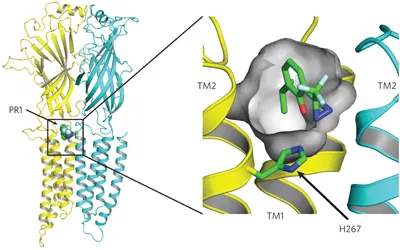General anaesthetic photolabels are used to find the molecular binding sites of anaesthetics, such as GABA receptors, protein kinase and tubulin. Mechanisms of anaesthesia.
Involvement of anaesthetics with voltage-dependent channels for negative ions and the mitochondria has been demonstrated by photolabelling. At clinical concentrations anaesthetics can effect the functioning of proteins. Photolabels can attach to residues or individual molecules lining protein pockets, and thus indicate the presence of a dynamic ligand in a pocket.

Photolabeling has particularly identified some components of the mitochondrial respiratory complex and mitochondrial enzymes as binding partners of halothane, and general anaesthetics have been demonstrated to alter mitochondrial respiration. Halothane can be localized to mitochondria, but elsewhere anaesthetics bind to neural mechanisms that do not involve energy. Ion channels such as GABA ion channels have also been shown to be modulated by anaesthetics. GABA inhibitory neurons are essential for the maintenance of gamma synchronies. Anaesthetics as a group have multiple targets in the brain, with different anaesthetics having different affinities.
Tubulin is the primary component of microtubules. Alpha and beta tubulins are found in every type of neuron, and have been suggested as a target for general anaesthetics. Anaesthetic agents, including halothane, have been demonstrated to bind in such a way as to destabilize microtubules, but microtubules do not seem to respond to every anaesthetic in this way.